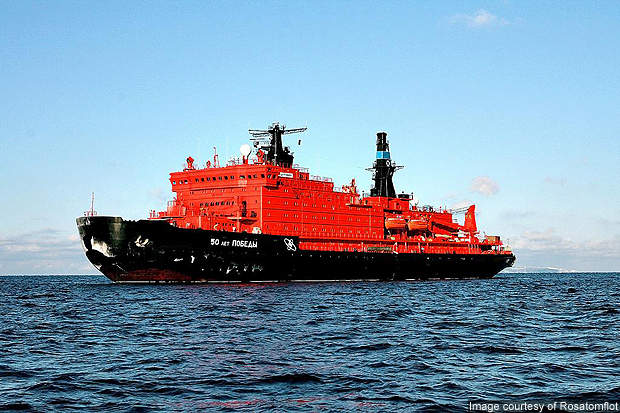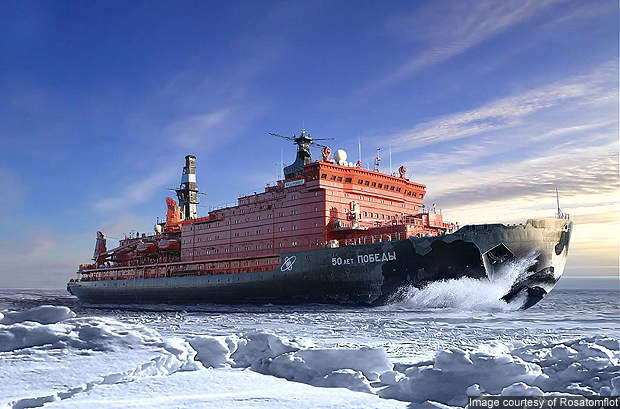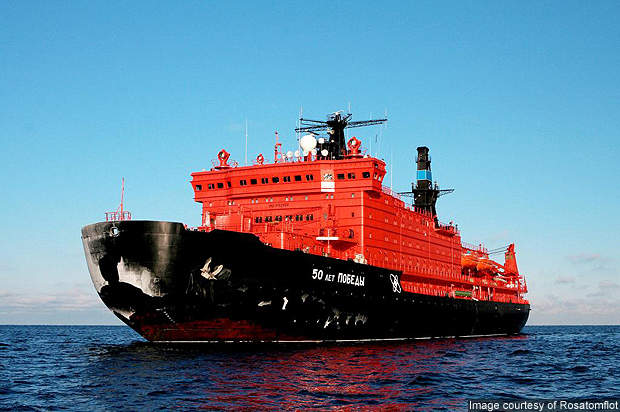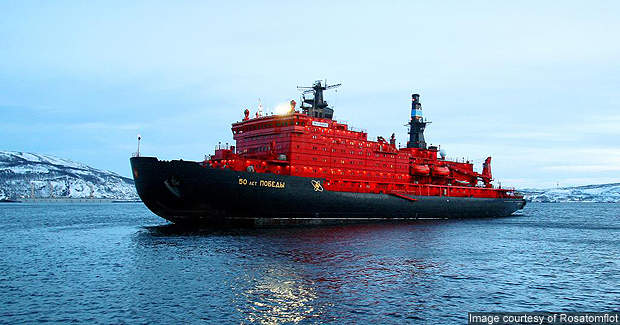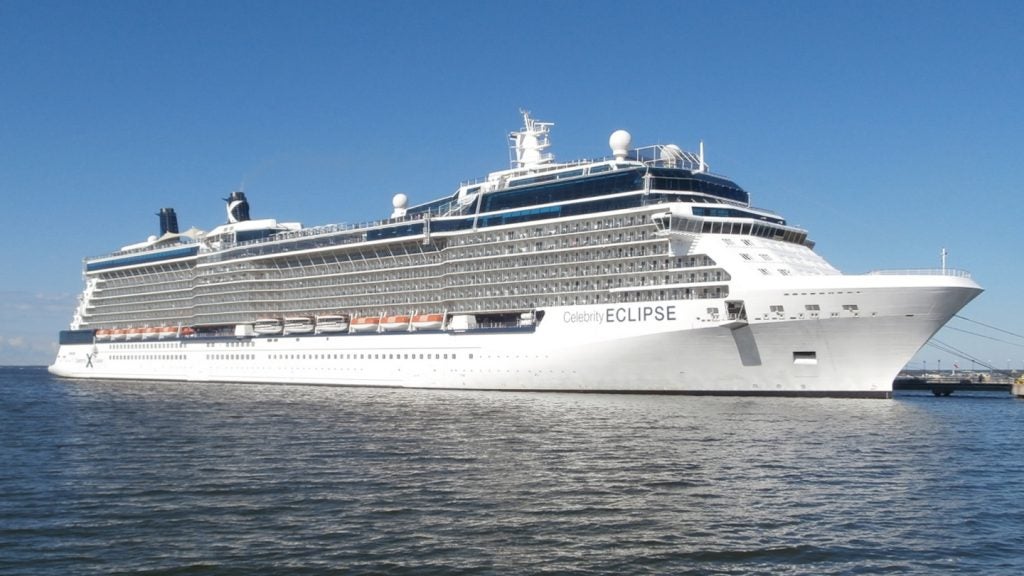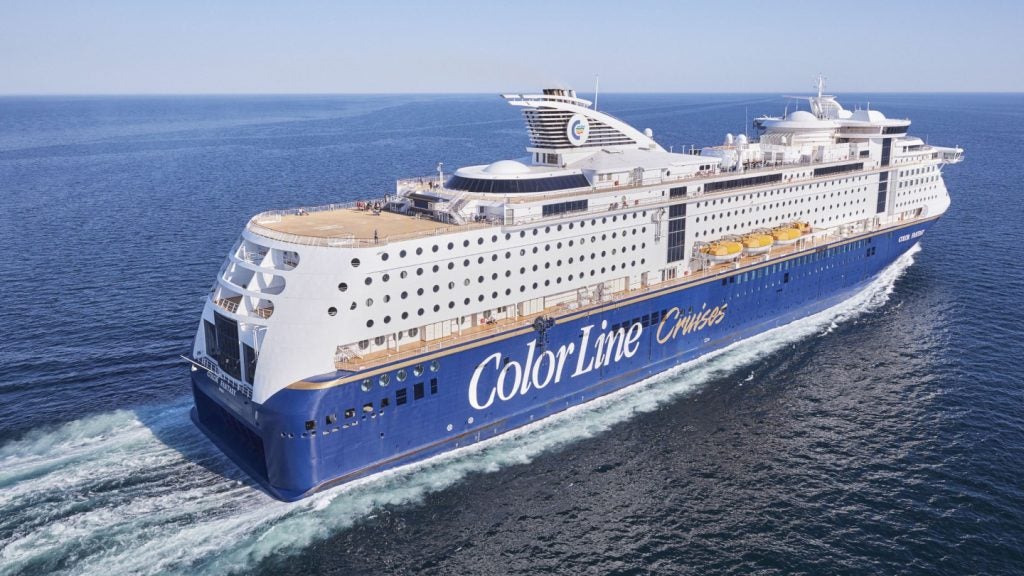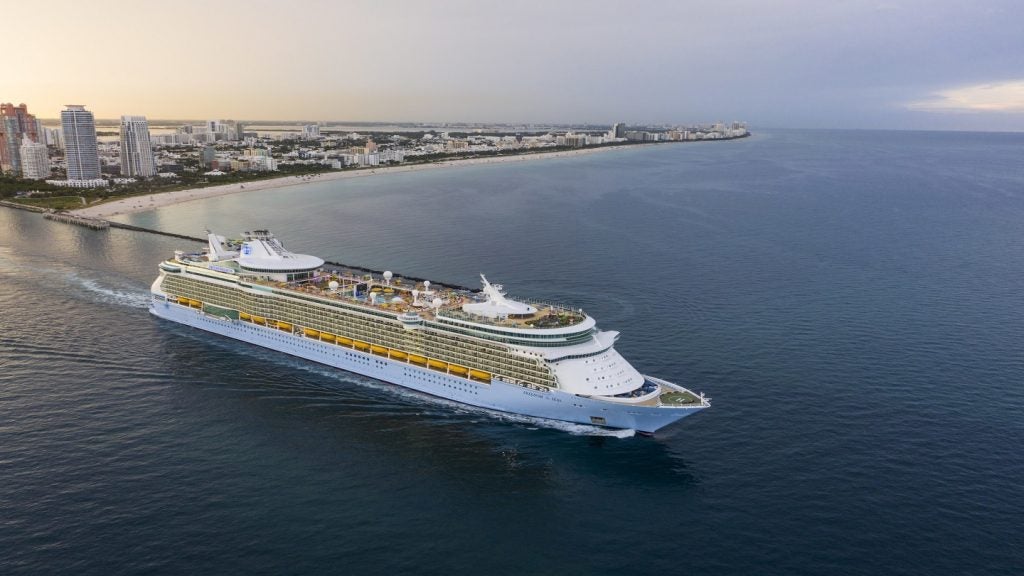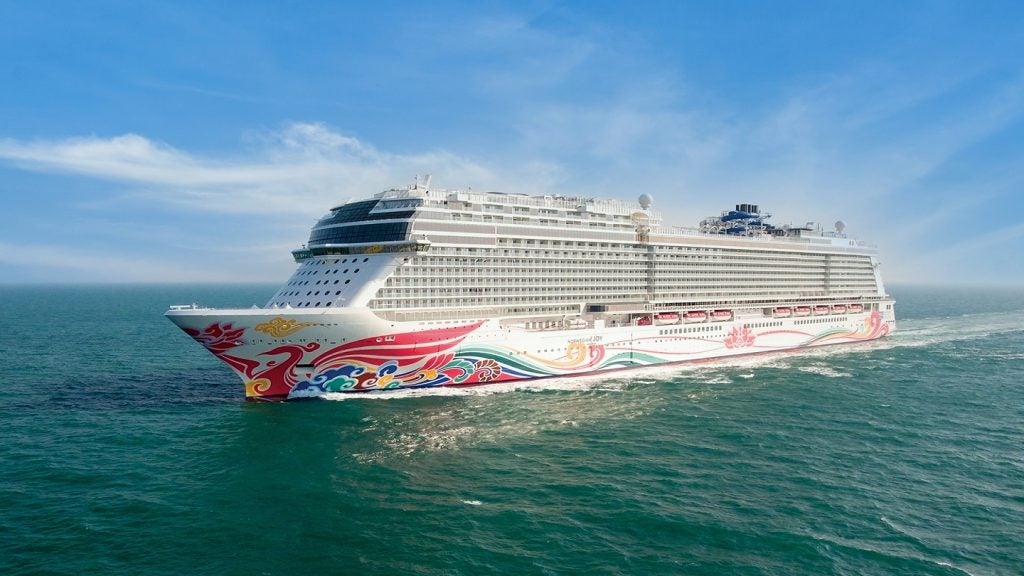The 50 Years of Victory is the last vessel in the six-ship series of Arktika Class nuclear-powered icebreakers. Built by Baltic Shipyard and Admiralty Shipyard in St Petersburg, the ship is owned by the Russian Federation Government and managed by Rosatomflot.
The vessel is an upgraded version of the Arktika Class icebreaker. It has an overall length of 159m, a width of 30m, a draught of 11m and a depth of 17.2m. Its displacement is 25,840t. The ship can break through ice up to 2.8m deep and is classified under Russian LL1 class.
The keel for the Victory was laid in October 1989. The ship was launched in December 1993 as the NS Ural, and delivered in 1994. The vessel completed two weeks of sea trials in February 2007 for commissioning in March 2007. The vessel arrived at it homeport of Murmansk in April 2007.
Quark Expeditions chartered the vessel for expeditions to the North Pole in 2008.
50 Years of Victory design and features
The ship has been designed with a double hull and a spoon-shaped bow. The shape of the vessel increases icebreaking capabilities and the hull is coated with polymer paint to reduce friction.
The Victory is fitted with a digital automated control system. The biological shielding complex was modernised and an ecological compartment was added. The ship has a helipad suitable for a MI-2 or KA-32 helicopter.
The ship’s propulsion plant includes two reactors: one to provide power and the other kept in standby mode.
The icebreaking is assisted by the air bubbling system and water ballast located in between the inner and outer hulls. The air bubbling system can deliver 24m³/s of water from jets to 9m under the surface. The vessel can break ice while sailing forward or backward.
Construction
The construction of the ship began in October 1989 at the Baltic Shipyard. Shipbuilding work was halted in 1994 due to funding problems and was resumed in 2003. The icebreaker took almost 18 years to complete. It was finally completed in the beginning of 2007.
Victory cabins
The ship can accommodate 140 crew and 128 passengers. Room categories include standard twin, mini, Victory and Arktika suites. The standard cabins feature a lower berth, a sofa bed, TV and DVD player, and private facilities with a shower. The suites feature a spacious bedroom and sitting room, a sofa bed in the sitting room, a safe, TV and DVD player, and private facilities with a bathtub.
The in-room amenities include a refrigerator, a coffee maker and a daily selection of fresh fruit, drinks and snacks.
Facilities
The ship can carry a helicopter and several Zodiac boats for shore transfers and landings. The helicopter extends the vessel’s capabilities to reach ice-locked, remote Arctic islands. Communications are provided by radio and satellite systems including navigation, telephone and fax.
The icebreaker offers a range of recreational facilities including a swimming pool, massage facility, music salon, volleyball court, a gymnasium and a clinic with a doctor. The ship’s restaurant serves a variety of food and beverages.
Propulsion
The icebreaker is equipped with nuclear powered propulsion system. Two OK-900A nuclear reactors provide a power output of 27.6MW. There are three 17.6MW electric propulsion motors installed. The propulsion system provides a maximum speed of 21.4kt in open water.

